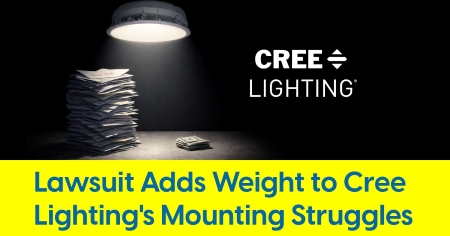September 29, 2023
Light Musings: The Price is Right?

Guest Author: Ted Konnerth, Egret Advisors
Ted Konnerth explores the intricacies and ambiguities of lighting project pricing
Culturally, we have a variety of ‘price’ terms and policies: MSRP, List Price, Distributor Net, Sticker Price, Sale Price, Member Price, Estimated Price, etc. The commonality across all of those prices is we know the ‘price’; it’s visibly documented to us. It’s certainly feasible to negotiate those prices and in many instances get a ‘discounted price’.
But the point of my view is we actually see a price in advance of buying the goods or services.
And then, there’s the lighting industry.
Distributor Net and List Price are visible and transactional. In short, you can place an order with a manufacturer for list or distributor net price and receive the goods. But then there’s the project business of lighting and the transactional nature changes dramatically.
In most lighting projects, the ‘price’ is a lump sum total of the project bill of material, which is subsequently itemized by line with a unique price for each Type on the project bill of material. That line item ‘price’ is created by an independent lighting representative. Each line item has been meticulously crafted into a final price, based on the independent lighting rep’s allocation and negotiation of a final lump sum of the manufacturer accepted price, plus overage, and in most cases, including a distributor gross margin for ‘handling costs’. That final list is given to the electrical distributor; via a purchase order from the electrical contractor. The ED then sends individual PO’s to each listed manufacturer for their respective bill of material.
The audacity of the process is that no one, including the individual manufacturers know the final ‘price’ for each line item on their respective bill of material until they receive a confirmation from their quotation department for the PO for the full bill of material. In practice, the rep functions as a broker; not a representative, to try to reduce the price of as many line items as feasible to arrive at a suitable package price for the benefit of the rep.
Closing a project is an arduous task for reps as they have competitors, and those competitors may have line items that are not capable of being substituted by the winning rep. That may lead to cooperation across competing reps, or exceptions by the specifying engineer/lighting designer, or a design concession on quality of substitution for meeting the budget (aka value engineering).
Ultimately a project has to come within a budget; which is overseen by the GC and their subs; specifically in this case, the EC has to bundle pipe, wire, labor, distribution equipment, lighting, and profitability to bring the electrical package into line with the GC expectation.
The rep control is to get to a package price that meets the expectation of the EC budget, with a modest gross margin for the distributor and a maximized commission for the rep. So, this starts with the final price and is reductively allocated across multiple lighting manufacturers based on 3 essentials:
-
The ‘quoted’ price received initially from each quotation department of the listed manufacturers.
-
The commission level at the quoted price.
-
Each manufacturer’s overage policy.
The gravy for the project is overage. Overage is generally allocated 90% to the rep; with 10% to the manufacturer. But overage policies can be complex since overage may be based on the quoted level and can be starkly lowered by requesting a reduced quoted price. Overage can be as high as 100% with selected manufacturers, but overage can also be critical in meeting annual quotas with key manufacturers, so taking a lower overage split may keep you on good terms with your key vendor.
The short story is simple…..
Overage is fungible across the package of manufacturers. No manufacturer truly knows how or why they have to lower quoted prices, and they understand that they could be lowering their bid to accommodate a higher commission or overage payout on a smaller competitor company’s bill of materials. Years ago, manufacturers would require a copy of a competitor bid to meet competition but ultimately those competitive bids can be modified or distorted as well; as the competitive rep is also moving overage across their bid submittal.
In the lighting project business, price is a mirage; to everyone except the rep. How did we get here? Next month I’ll address the etiology of overage and pricing and commissions in the lighting industry.
Your comments are always welcome.

About the Author:
Ted Konnerth, Ph.D, is the CEO and Founder of Egret Advisors, a boutique M&A consulting firm that specializes solely in the lighting industry. With 40 years of global experience in the lighting and electrical industry, Konnerth has fostered relationships with a vast spectrum of influential companies, ranging from leading lighting manufacturers to niche operations.










